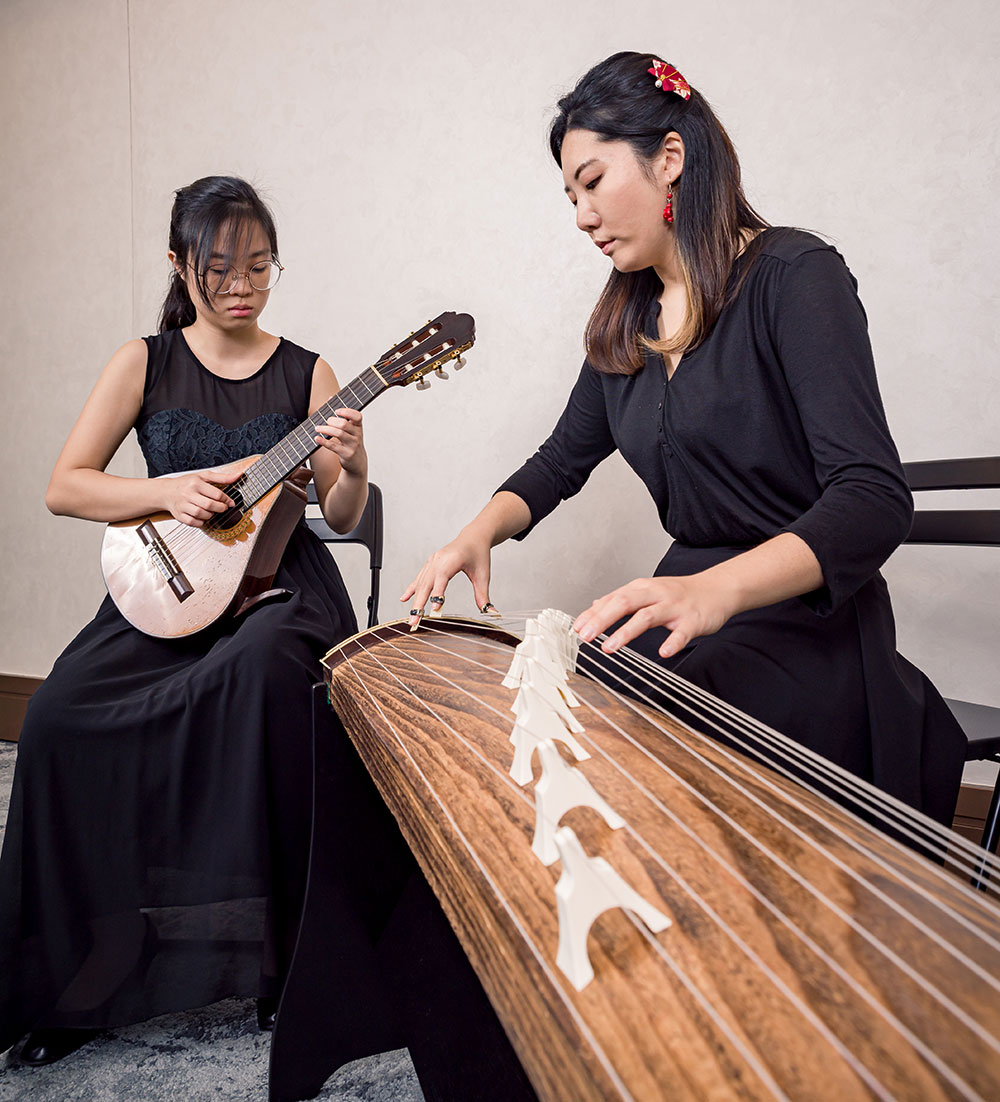January 14, 2020
As Niibori guitars have their origins in Japan, the expectation would be that NUS Guitar Ensemble (GENUS), Singapore’s first Niibori guitar ensemble, would have a strong Japanese resonance. However, each presentation by GENUS in recent years has taken on a broadly international and contemporary flavour.
In an effort to blend cultures and test the range of Niibori guitars, Horizons, returns GENUS to its Japanese roots with an unprecedented collaboration with the NUS Koto Ensemble (KotokottoN). The guitar and the koto (a traditional Japanese zither) will showcase seamless transitions between Japanese and Western classical pieces, and celebrate the ability of music to bring us new ways of seeing and experiencing culture.
As part of our exploration into the NUS Arts Festival 2020 concept Ways of Seeing, we had the opportunity to interview Dr Robert Casteels and the students from GENUS to ask them how they approached this challenge and what led them to this unusual collaboration.


